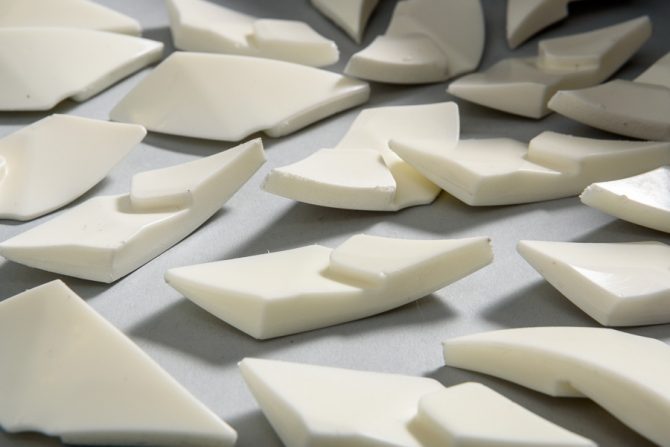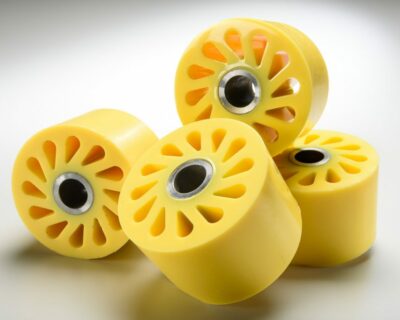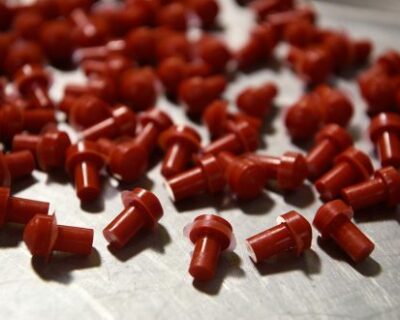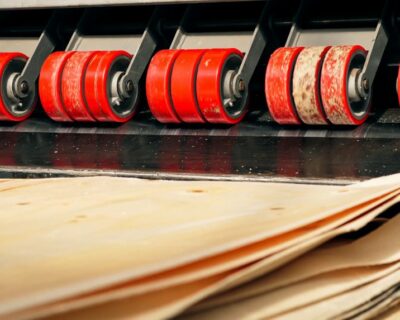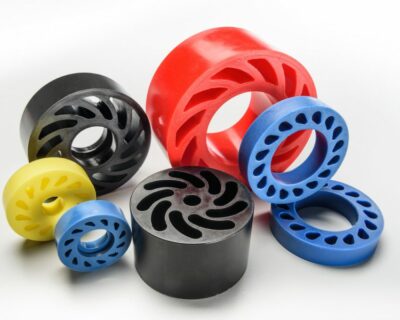In many of our Tech Tips and Application Notes, we often mention we custom formulate urethane to meet customers’ applications.
What exactly do we mean by this? In a nutshell, we choose the right urethane material to ensure the urethane part does exactly what you expect it do. In this FAQ, we discuss a few of the considerations that go into formulating urethane for your application.
Step #1: Choosing the right material and/or additives
We won’t bore you, but suffice to say, we can choose from hundreds of urethane material types and options – and part of our expertise is knowing which material will work for a given application.
For example, the photo below shows a small part we created for use in a fiber optic cabling operation. The curved part sits inside a cable spool and guides the cable on and off the spool. The urethane material used was chosen because it can withstand the constant abrasion of the cable.
In the case of a part needing high abrasion resistance, choosing a good strong urethane material sometimes isn’t enough. If this is the case, we need additives to enhance the physical characteristics.
As with urethane materials, all kinds of additives exist too. (Yep, things get pretty exciting here at UI when we get to go chemical shopping). By using additives, we can enhance the following:
- Abrasion resistance
- Tensile strength
- Cut / tear resistance
- Static dissipation
- Hydrolysis resistance
- Heat resistance
- Chemical resistance
- UV stabilization
We also have additives that reduce the specific gravity of urethane to a point where it will float. For example, we’ve made 5” diameter floating urethane balls with the simple addition of a weight reduction product. The urethane remained exceptionally strong, and impervious to immersion in water, and it floated.
Step #2: Factoring in the environment
Although molded urethane is a solid, its environment can and does affect it, including temperature (extreme heat or cold), humidity, and sunlight. A urethane part can also be affected by where it lives and works e.g.:
- Is the environment gritty, dirty, or salty (for example, marine environments)?
- Is the part operating in a wet or greasy location (and how will the grease affect it)?
- Is it subjected to various chemicals or gasses, such as chlorine?
Fun fact: Chlorine gas in high concentrations renders urethane gooey (yes, that’s a technical term) after a while – which means the parts go soft, lose their performance edge and then have to be replaced.
Environment was a critical element when creating super soft rollers for Boa-Franc, a flooring manufacturer based in Quebec, Canada. Not only did the urethane rollers need to meet precise production requirements, but they also “lived” inside machinery where the stains and coatings used on the flooring were UV cured in a matter of seconds.
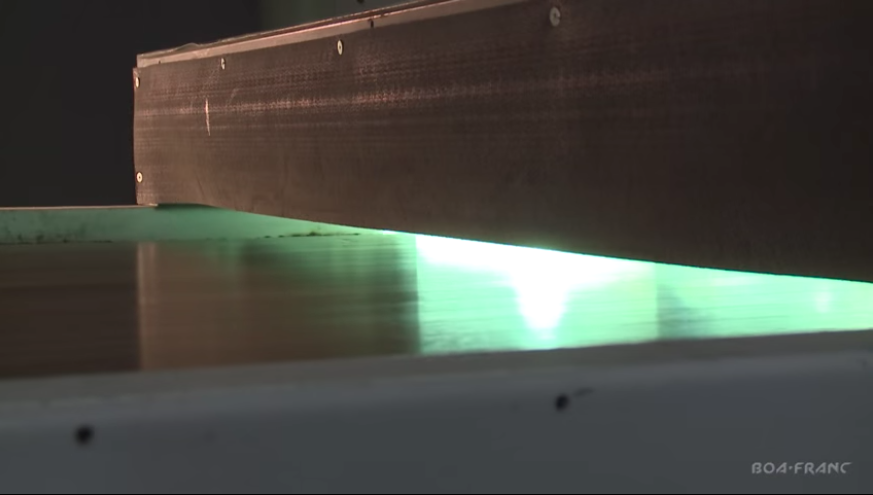
Environment was also a factor when we created dual color rollers to survive immersion in very hot water for significant periods of time.
Step #3: Considering the type of application – e.g. FDA approvable
According to FDA regulations, urethane parts used in wet or dry food processing must conform to specific CFRs for Indirect Food Additives.
As an example, the FDA approvable urethane cast wheels pictured below had to be manufactured to exacting tolerances – and without bubbles in the nooks and crannies. Why? Bubbles attract bacteria. Any bubbles mean the part has to be stripped and remade.
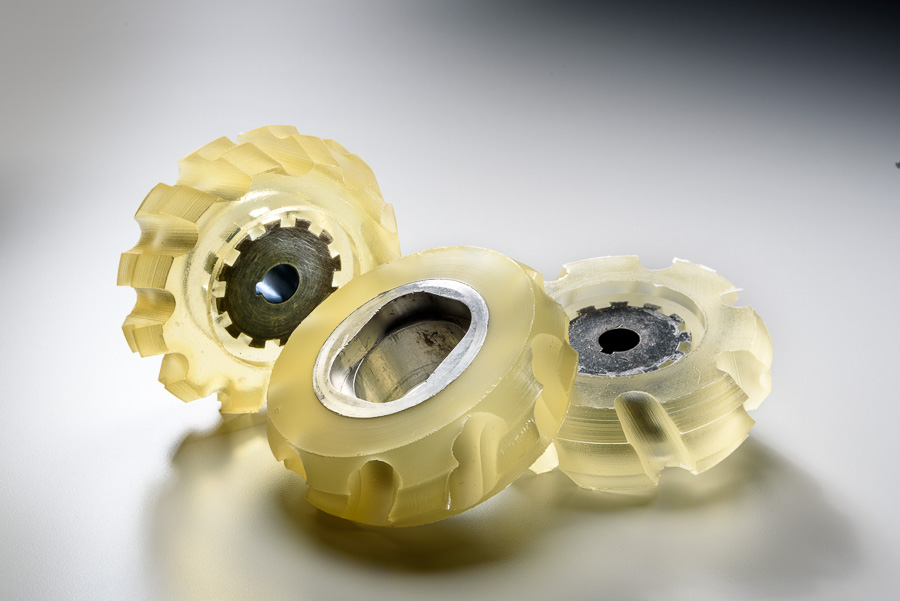
The urethane chosen for this application had to meet FDA regulations – as well as our own internal specs for how the urethane reacted to the casting and molding process, etc.
Bottom line: we can be pretty nosy!
To reach the right urethane formulation, we often ask a lot of questions. We’re not being nosy, well okay, maybe we are, but asking questions and listening to your answers is an important part of what we do to make sure your formulation is the right one for your application.
Because we ask so many questions, we’ve made things from urethane that shouldn’t work – but do, and work well. Because we don’t take “no” for an answer, we’ve done all manner of things outside the norm of regular urethane casting.
We search and poke and prod and search some more until we find just the right formulation for your needs. Sometimes it leads to very unconventional formulations, but it’s what we do.
If you have a question about whether we can create a urethane wheel, roller, or specialized part suited to your application – give us a shout. We’re happy to talk to you.




